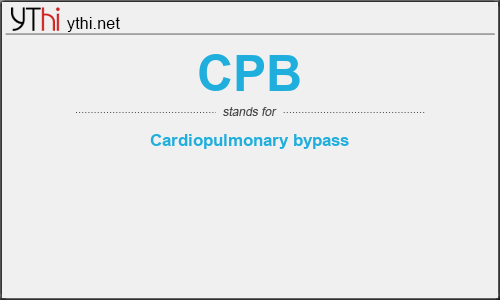What does CPB mean? What is the full form of CPB?
The Full Form of CPB is Cardiopulmonary bypass.
Cardiopulmonary bypass (CPB) is a technique in which a machine temporarily takes over the function of the heart and lungs during surgery, maintaining the circulation of blood and the oxygen content of the patient’s body. The CPB pump itself is often referred to as a heart–lung machine or “the pump”.
Cardiopulmonary bypass (CPB) provides a bloodless field for cardiac surgery. It incorporates an extracorporeal circuit to provide physiological support in which venous blood is drained to a reservoir, oxygenated and sent back to the body using a pump. Team effort between surgeon, perfusionist and anaesthesiologist is paramount for the successful use of CPB. However, it also has its share of complications and strategies to reduce these complications are the area of the current research.
Advances in cardiac surgery have been possible due to the development of cardiopulmonary bypass (CPB). CPB is a form of extracorporeal circulation whose function is circulatory and respiratory support along with temperature management to facilitate surgery on the heart and great vessels. The first successful human cardiac surgery using CPB was performed by John Gibbon in 1952[1] for repair of the atrial septal defect. The safe conduct of CPB requires a team effort between the surgeon, perfusionist, and anaesthesiologist.
CPB circuit includes pumps, cannulae, tubing, reservoir, oxygenator, heat exchanger and arterial line filter [Figure 1]. Modern CPB machines have systems for monitoring pressures, temperature, oxygen saturation, haemoglobin, blood gases, electrolytes as well as safety features such as bubble detectors, oxygen sensor and reservoir low-level detection alarm.
CPB
means
Cardiopulmonary bypass![]()
Translate Cardiopulmonary bypass to other language.


Leave a Reply
You must be logged in to post a comment.